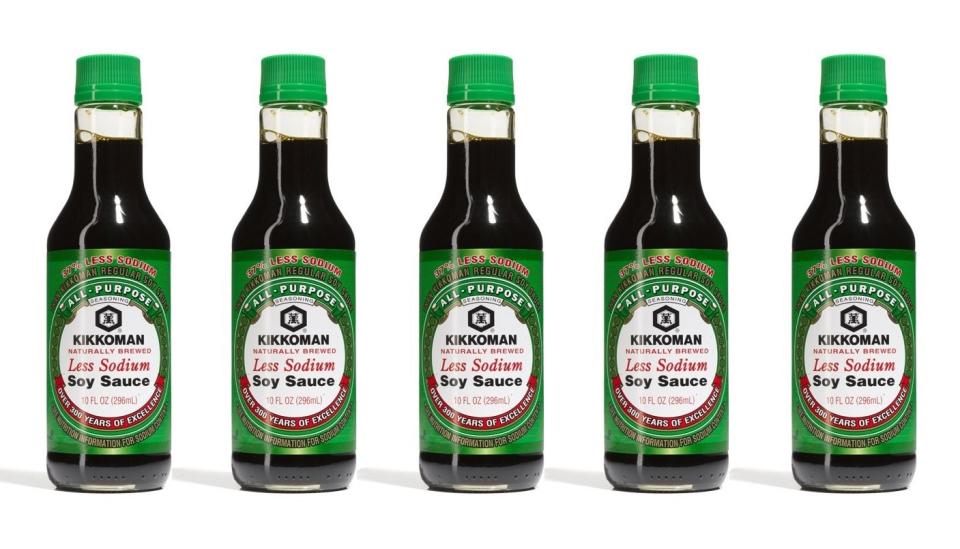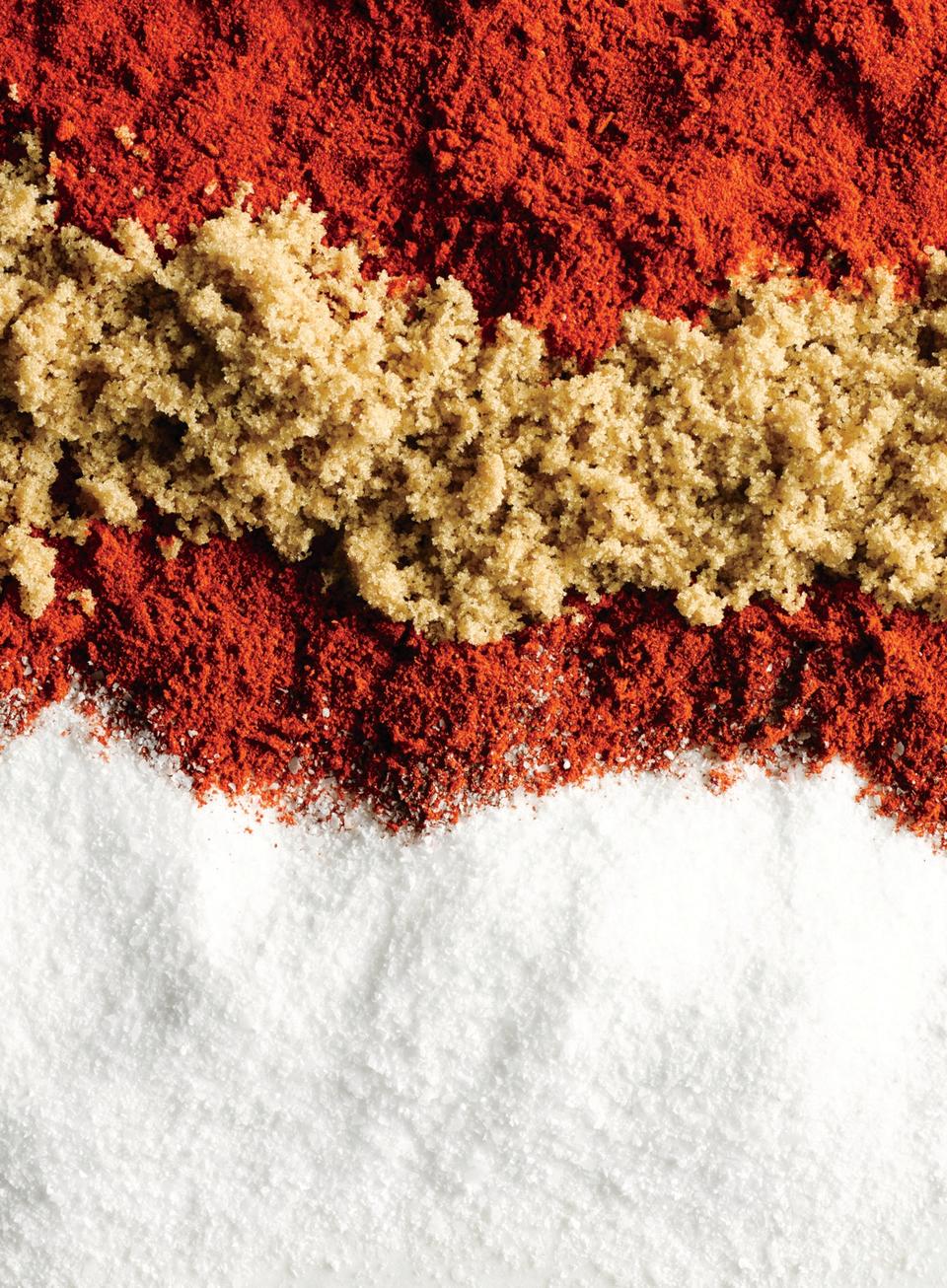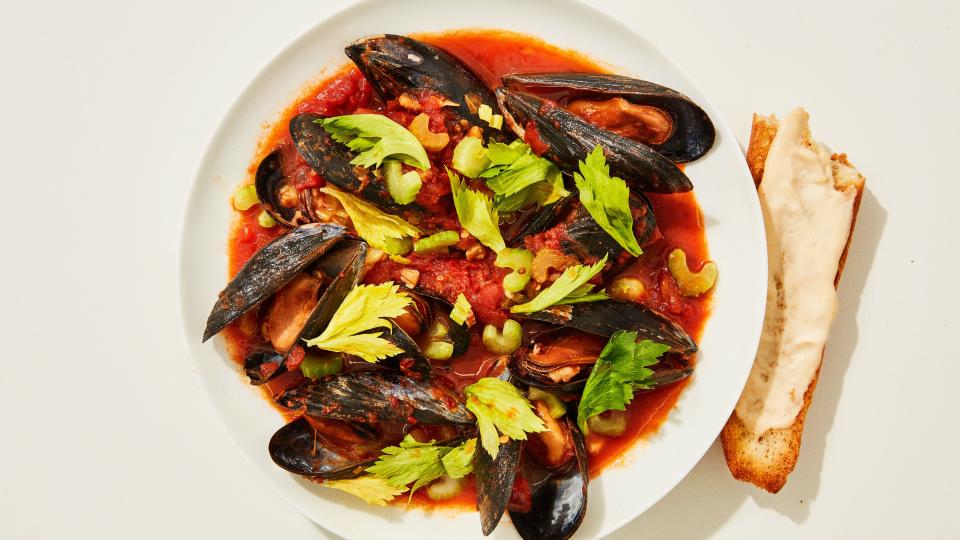5 Salty Ingredients You Can Use Instead of Salt
Salt is probably the most important ingredient in your kitchen. When used properly, it makes food taste, well, more—more like itself, more like it was meant to be, more like something outrageously delicious that you actually want to eat. And, contrary to what your parents might say, it belongs in and on just about everything you cook, from salads and sandwiches to ice cream and margaritas.
And while you can always rely on a pinch of tried-and-true kosher salt or a finishing sprinkle of flaky Maldon to get you where you're going, when it comes to seasoning, you've got options. There are so many salt-adjacent ingredients and condiments out there that not only help to bring out the best in the foods they're being added to, but have their own unique flavors to offer, too. Whether we're using them in addition to or straight up instead of salt, these flavor boosters are an indispensable part of our kitchen arsenal. And once you learn how to use them, we're pretty sure they'll be a part of yours, too. Here are a few of our faves.
If you're only using that bottle of soy sauce for your takeout sushi, you're missing out—this umami-powerhouse makes just about everything taste better.
Soy Sauce
Yeah, yeah. You know the stuff. You probably even have some in your pantry right now. (Or at least a couple little plastic pouches of it in your junk drawer from the last time you ordered takeout.) Soy sauce, made from fermented soybeans, is packed with salt and deep, dark umami flavor; it lends an unmistakable depth to basically anything it touches, from fried rice to marinated chicken skewers. But just because the sauce is Asian in origin doesn't mean it isn't just as versatile as kosher salt. We love rubbing some over a roast chicken before popping it into the oven, adding a dash or two to a pile of roasted vegetables, or even using some to season the braising liquid for short ribs.
The simplest of all toppings adds the biggest flavor.
Cured Fish
Salt-cured fish—think anchovies and sardines—are packed with umami flavor, and can actually be pretty mild in both the fishiness and saltiness departments, depending on what kind (and brand) you're using. They add a distinctive mouthwatering quality to all kinds of dishes, whether they're draped whole over pieces of buttered toast, chopped into pieces and tossed with pasta, or mashed into a paste and incorporated into a salad dressing. The cool thing about cured fish is that, unlike some of the saucier items on this list, you can control their saltiness somewhat; rinsing them under the tap or letting them soak in a few changes of cold water will take out some of the sharpness.
That sweet, salty, funky, fishy umami bomb takes dinner from 0-100 real quick.
Fish Sauce
This funky elixir is like a cross between soy sauce and cured fish, but with bigger, brassier party vibes. Fish sauce is made from salted and fermented fish, and brings a bright, almost ocean-like salinity, along with lots of fishy, caramel-y flavors to the table. And while it's classic in a green papaya salad or Thai-style larb, we often use a splash of it anywhere we might use fishy-fish like anchovies—think Caesar salad dressing, simple pasta dishes, and even in pizza sauce. This is especially true in situations where we want a little bit of salty, fishy flavor, but don't feel like opening up a whole tin—or are just too lazy to. (It's also the secret ingredient in this 5-ingredient onion dip. Don't knock it 'til you've tried it!)
There's more to miso than soup. A tub of the good stuff can upgrade most weeknight dinners instantly.
Miso
We’re big on miso in these parts. Miso is a fermented mixture of soy beans (usually, but other grains and beans are used too) and koji (a totally safe type of mold that grows on rice) that can be diluted and spread onto meats, mixed into marinades and sauces, or swirled into dressings and dips. We manage to sneak a spoonful or two into almost every soup or stew we come across, from classic chicken noodle to French onion to beef chili. And since there are so many different kinds to choose from, with flavor profiles ranging from mild and sweet to dark and bitter, we're able to pick one that fits best with whatever we're seasoning.
We season our chicken well before cooking it, and yes, it makes chicken that much better.
Fermented Vegetables (and Their Brines)
Most fermented vegetables—think dill pickles, sauerkraut, and kimchi—are packed in a mixture of salt, water, and spices while they undergo their transformation, meaning both the veggies and the liquid they're hanging out in are preeeeeetty salty. Chopping up the solid parts and tossing them into a grain salad or stirring them into a soup is a great way to add not only brightness and seasoning, but a bit of pickle-y funk as well. And once all of the pickles are gone from that jar, don't throw out that brine! Use it like any of the liquid seasonings we discussed above; any marinade, salad dressing, or stew you incorporate it into will thank you.
But you have to keep something in mind when using ingredients like this: They contain salt. Duh. That’s why we reached for them, right? Right. Just remember that if you're using any of the above ingredients, make sure to add them gradually, taste as you go, and don't season with actual salt as compulsively as you usually do (or ought to do, at least). If you season your stir fry with soy sauce, hold back on the salt. If you season your broth with miso, hold back on the salt. Salt is an amazing thing, but too much of it can turn you into a raisin. We like you better when you’re not a raisin.








